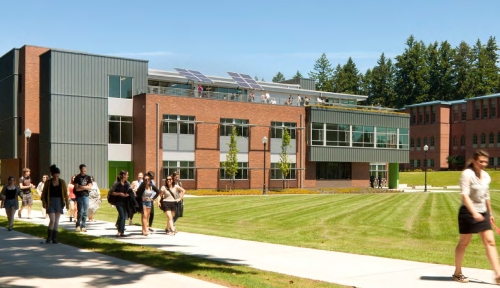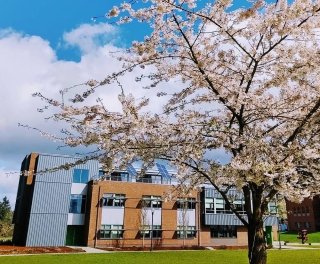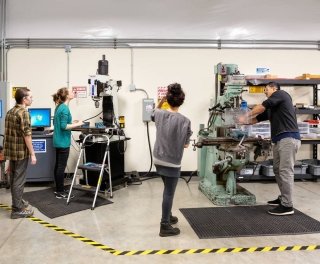Launched in 2010 and completed in 2016, the Engineering Initiative campaign to raise funds for the completion of two, state-of-the-art buildings to support engineering education at Saint Martin's: Cebula Hall and Panowicz Foundry for Innovation.
Saint Martin’s first engineering programs were approved in 1940 and gained traction in the post-World War II years. For many years, Father Richard Cebula, O.S.B., an inspiring professor and a monk of Saint Martin’s Abbey, guided the programs and established their reputation for excellence.
The University’s engineering programs are rooted in the Benedictine Catholic tradition of holistic education. Saint Martin’s engineering students receive in-depth professional education, as well as a solid base in the liberal arts, graduating with a strong foundation of general knowledge to support them in their careers or in advanced engineering studies. Students enrolled in the programs have long competed successfully with their counterparts from much larger schools. Among the honors brought home by the University’s engineering students was a recent national second place finish in the PCI Big Beam Contest.



